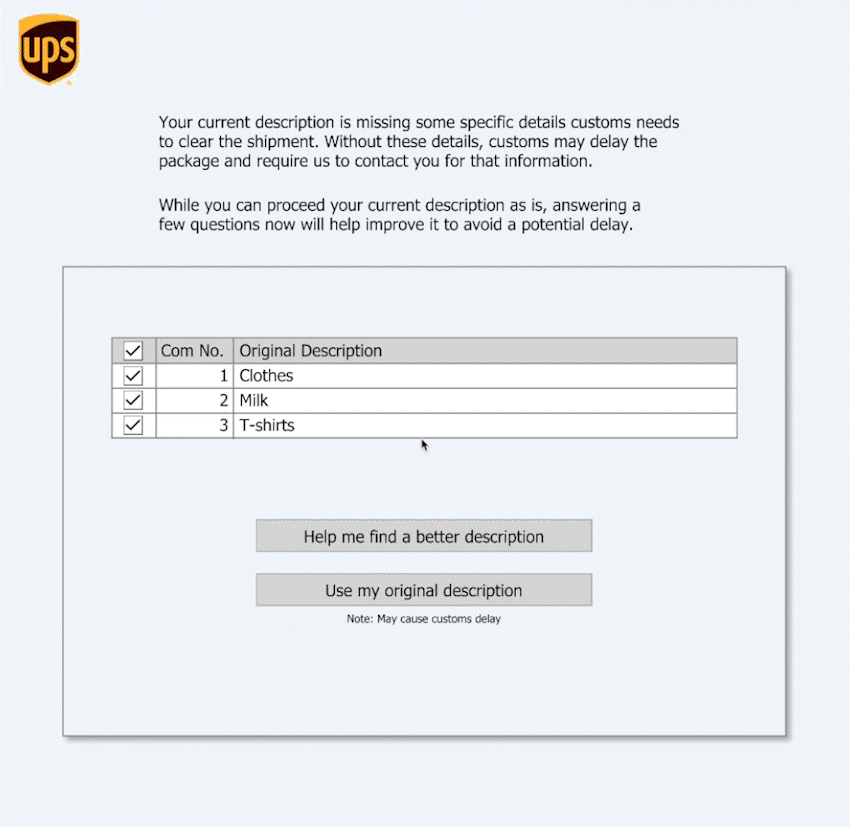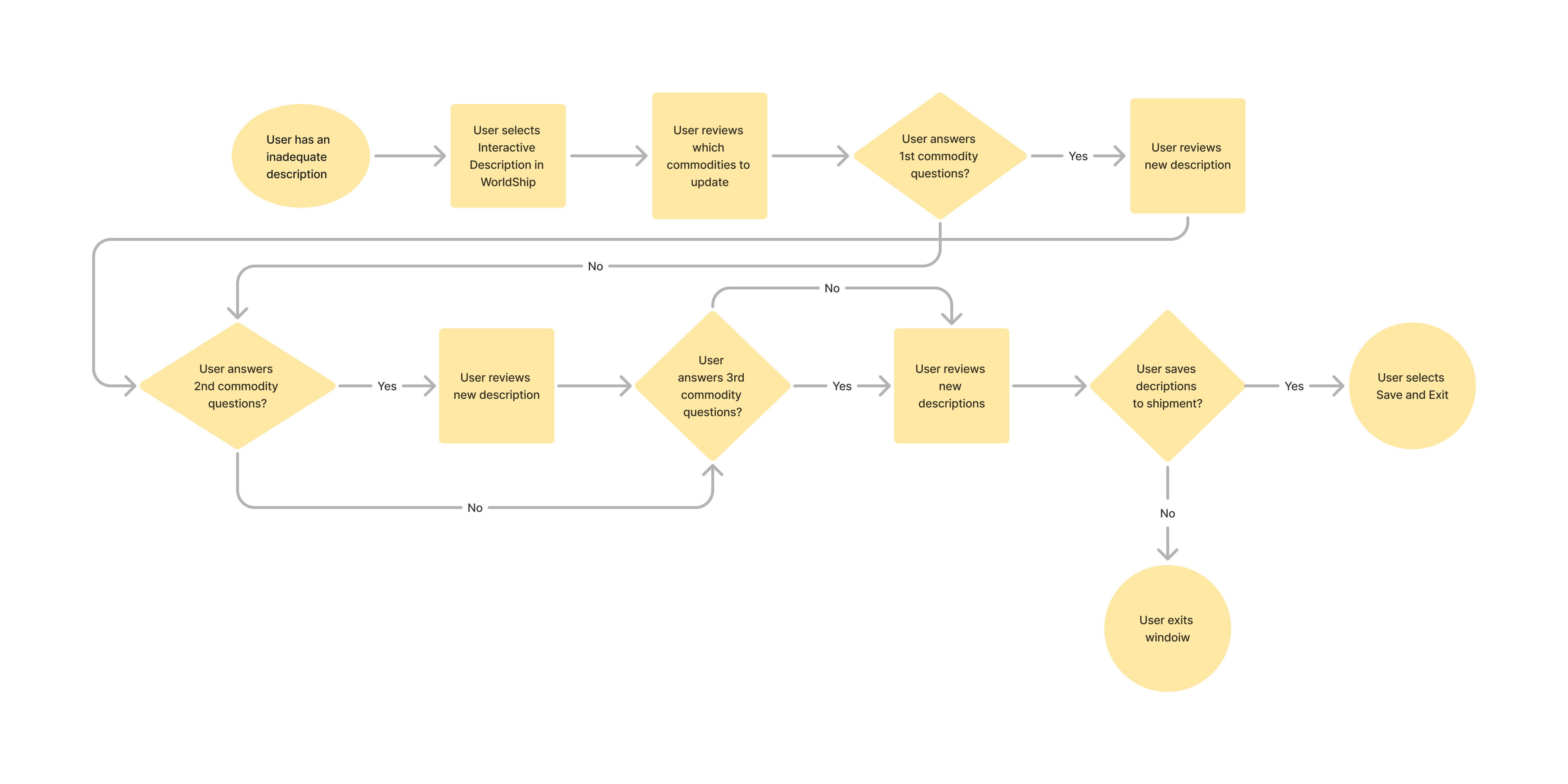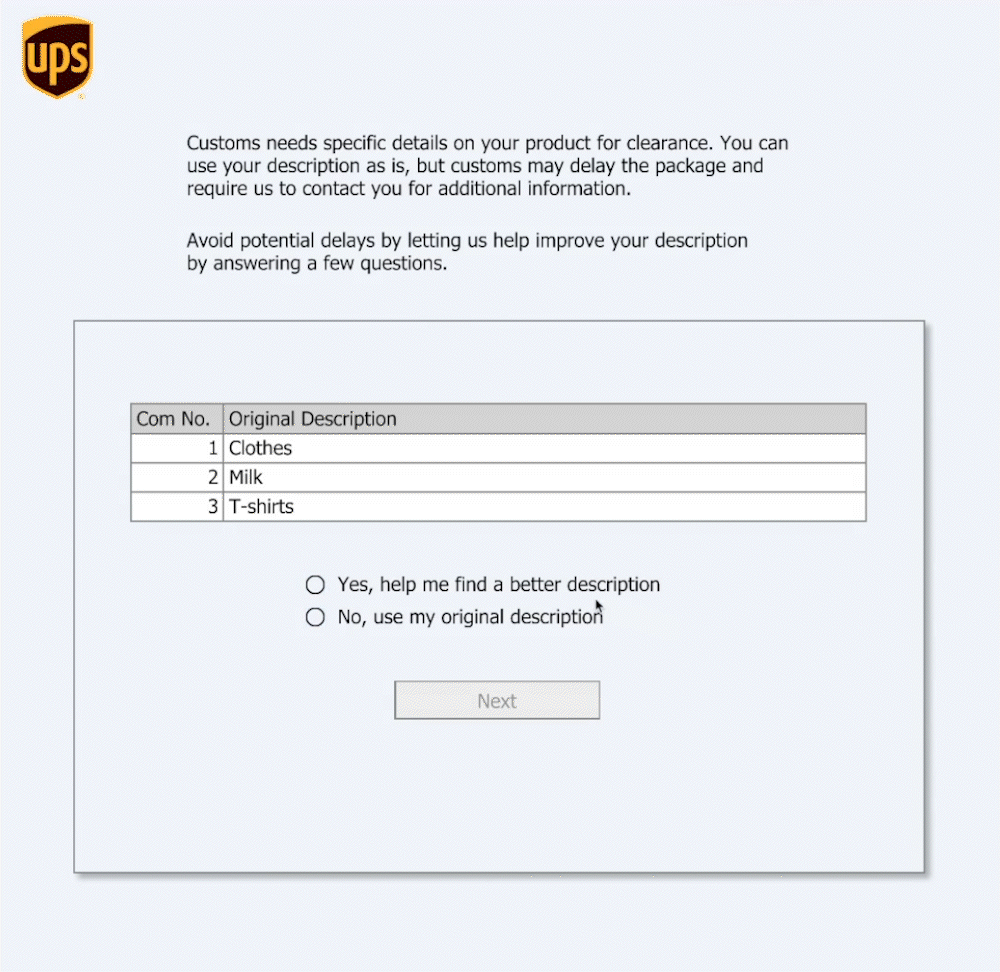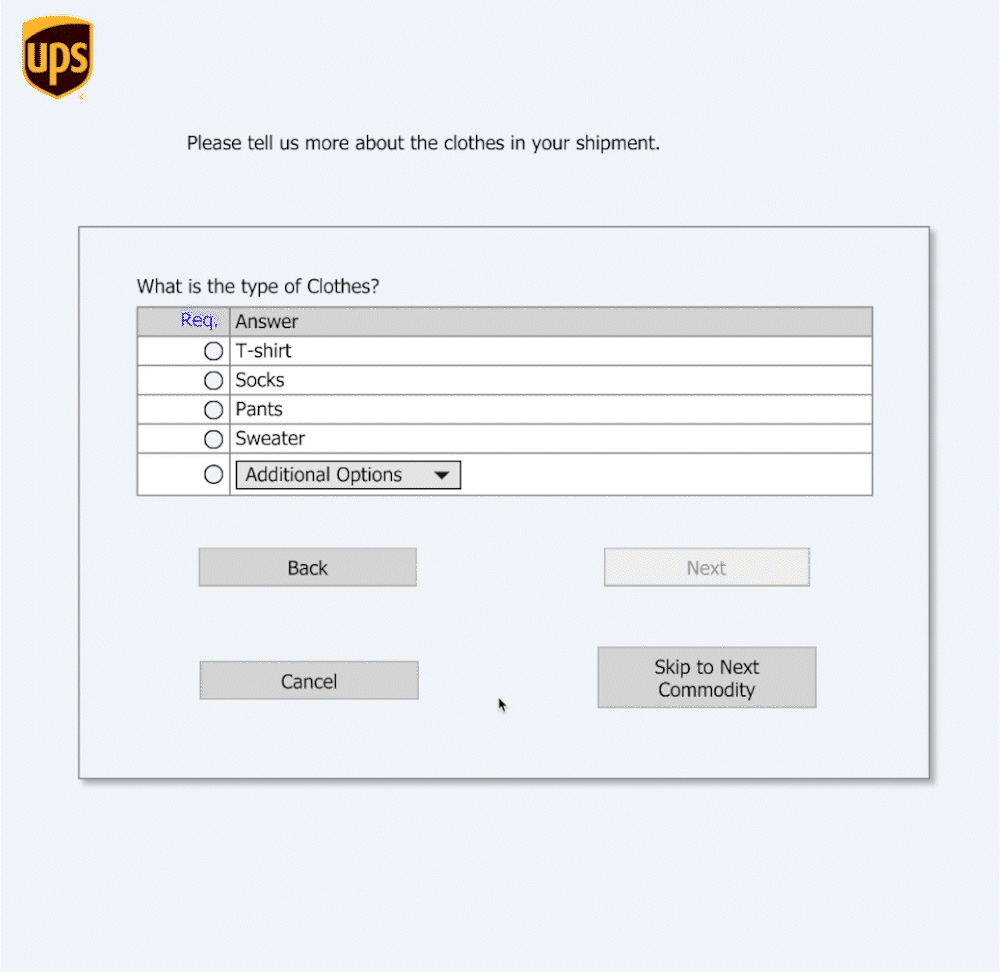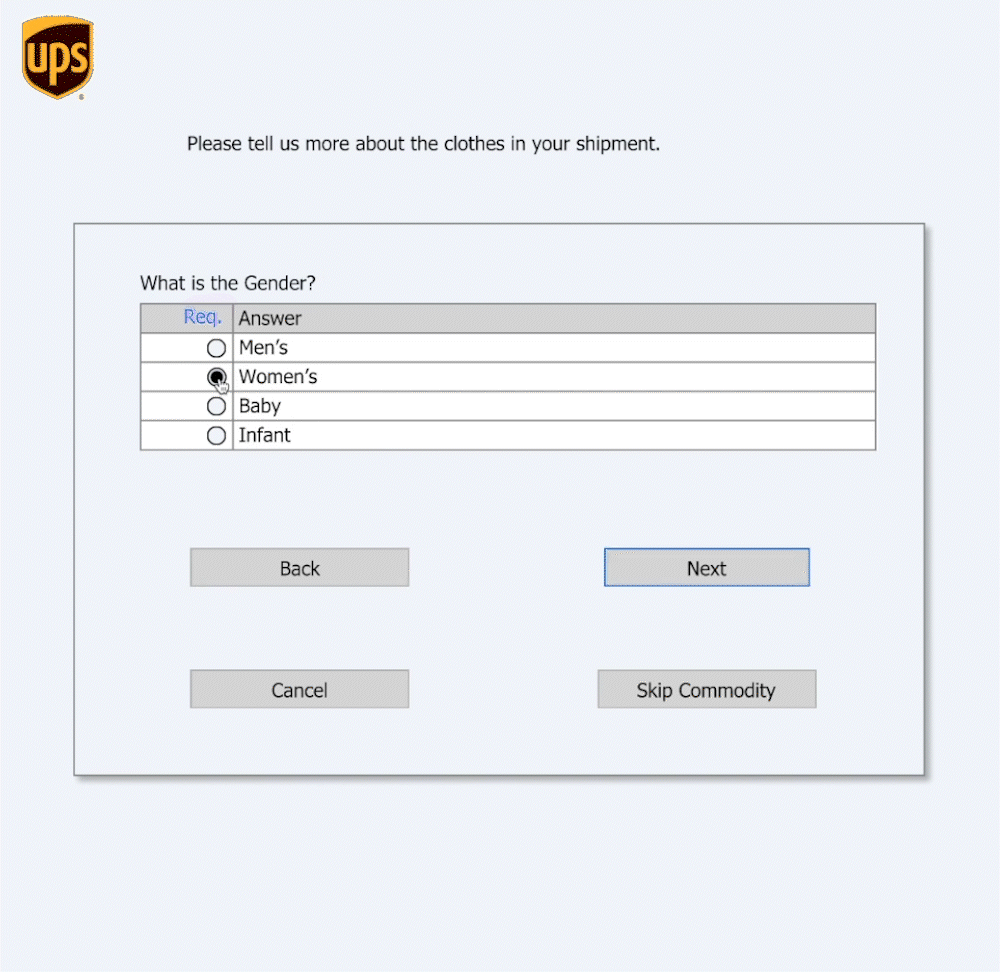UPS WorldShip Interactive Description
UPS WorldShip is a public software made to quickly process a large number of packages from multiple desktops. This new feature updates the customer's package description based on a series of questions and responses to assess the tariff code for accurate customs fees to be paid.
